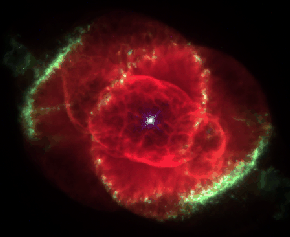
This image, taken by the Hubble Space Telescope, shows a very complex
planetary nebula. It is nicknamed the "Cat's Eye Nebula" and is about
1,000 years old.
Courtesy of NASA | 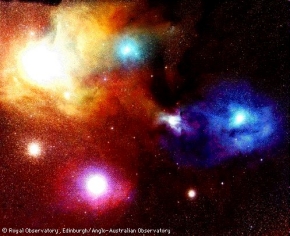
This is an image of Antares & Rho Ophiuchi.
Courtesy of the Anglo-Australian Observatory/Royal Observatory Edinburgh |
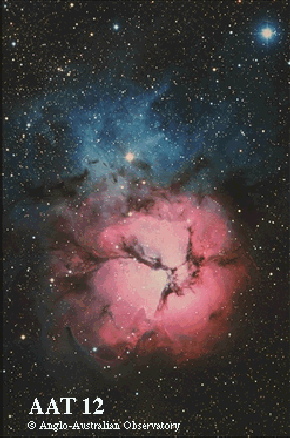
This is the Trifid Nebula in Sagittarius. The red HII region with its young
cluster is surrounded by a blue reflection nebula.
Courtesy of the Anglo-Australian Observatory/Royal Observatory Edinburgh | 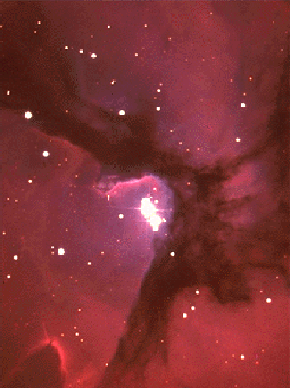
This image shows stars that excite the Trifid Nebula.
Courtesy of the Anglo-Australian Observatory/Royal Observatory Edinburgh |
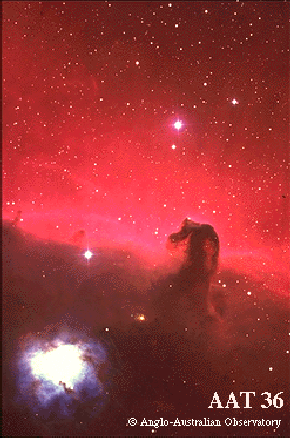
This is the Horsehead Nebula and NGC 2023.
Courtesy of the Anglo-Australian Observatory/Royal Observatory Edinburgh | 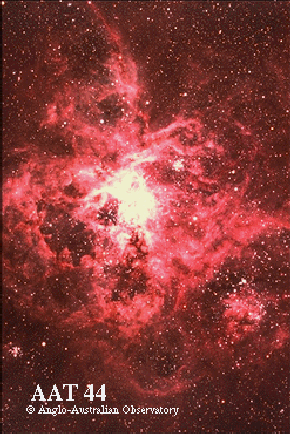
This is the Tarantula Nebula around 30 Doradus.
Courtesy of the Anglo-Australian Observatory/Royal Observatory Edinburgh |
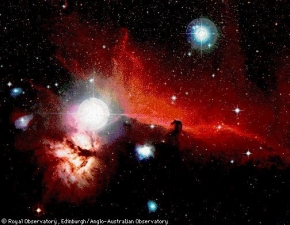
This is an image of the Horsehead Nebula which is 1500 light years away.
Courtesy of the Anglo-Australian Observatory/Royal Observatory Edinburgh | 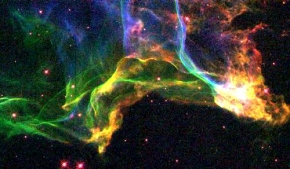
This image shows a small portion of a nebula called the "Cygnus Loop." This supernova remnant lies 2,500 light-years away in the constellation Cygnus the Swan.
Courtesy of Jeff Hester (Arizona State University) and NASA |
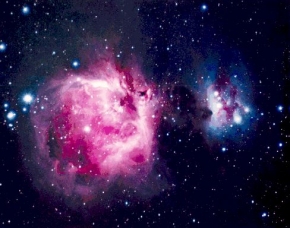
This is an image of the Orion Nebula which is an emission nebula 1,500 light years away. It is known as "The Great Nebula of Orion."
Courtesy of the Anglo-Australian Observatory/Royal Observatory Edinburgh | 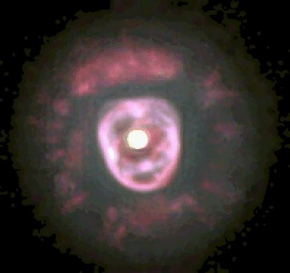
This is the Eskimo Nebula also known as Clownface Nebula which has an unusually bright central star.
Courtesy of Jeff Hester (Arizona State University) and NASA |
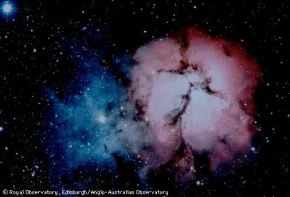
This is the Trifid Nebula which is 2,000 light years away. It is called this because of the three dark division lanes.
Courtesy of the Anglo-Australian Observatory/Royal Observatory Edinburgh | 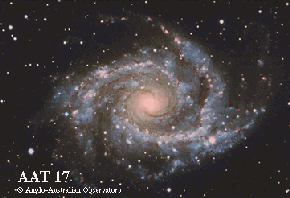
This is a spiral galaxy, NGC 2997.
Courtesy of the Anglo-Australian Observatory/Royal Observatory Edinburgh |
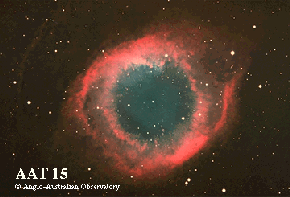
This is the Helix nebula, a planetary nebula in NGC 7293.
Courtesy of the Anglo-Australian Observatory/Royal Observatory Edinburgh | 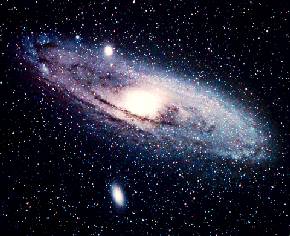
This is the Andromeda Galaxy, our nearest large neighbor galaxy.
Courtesy of NASA |
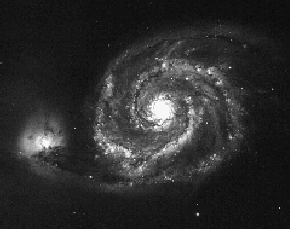
This is the Whirlpool Galaxy M51 and was one of Messier's original discoveries.
He discovered it on October 13, 1773, when observing a comet.
Courtesy of NASA | 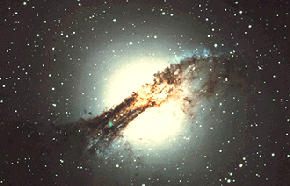
This is an image of the radio galaxy Centaurus A.
Courtesy of the Anglo-Australian Observatory/Royal Observatory Edinburgh |
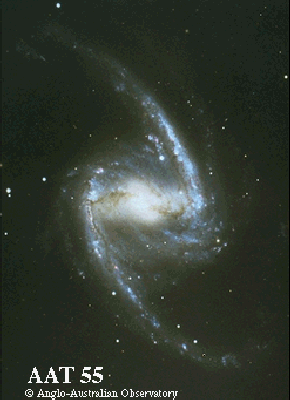
This is the Barred Sprial Galaxy, NGC 1365.
Courtesy of the Anglo-Australian Observatory/Royal Observatory Edinburgh | 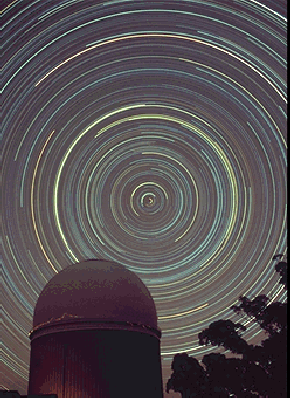
This image shows startrails around the South Celestial Pole.
Courtesy of the Anglo-Australian Observatory/Royal Observatory Edinburgh |
























